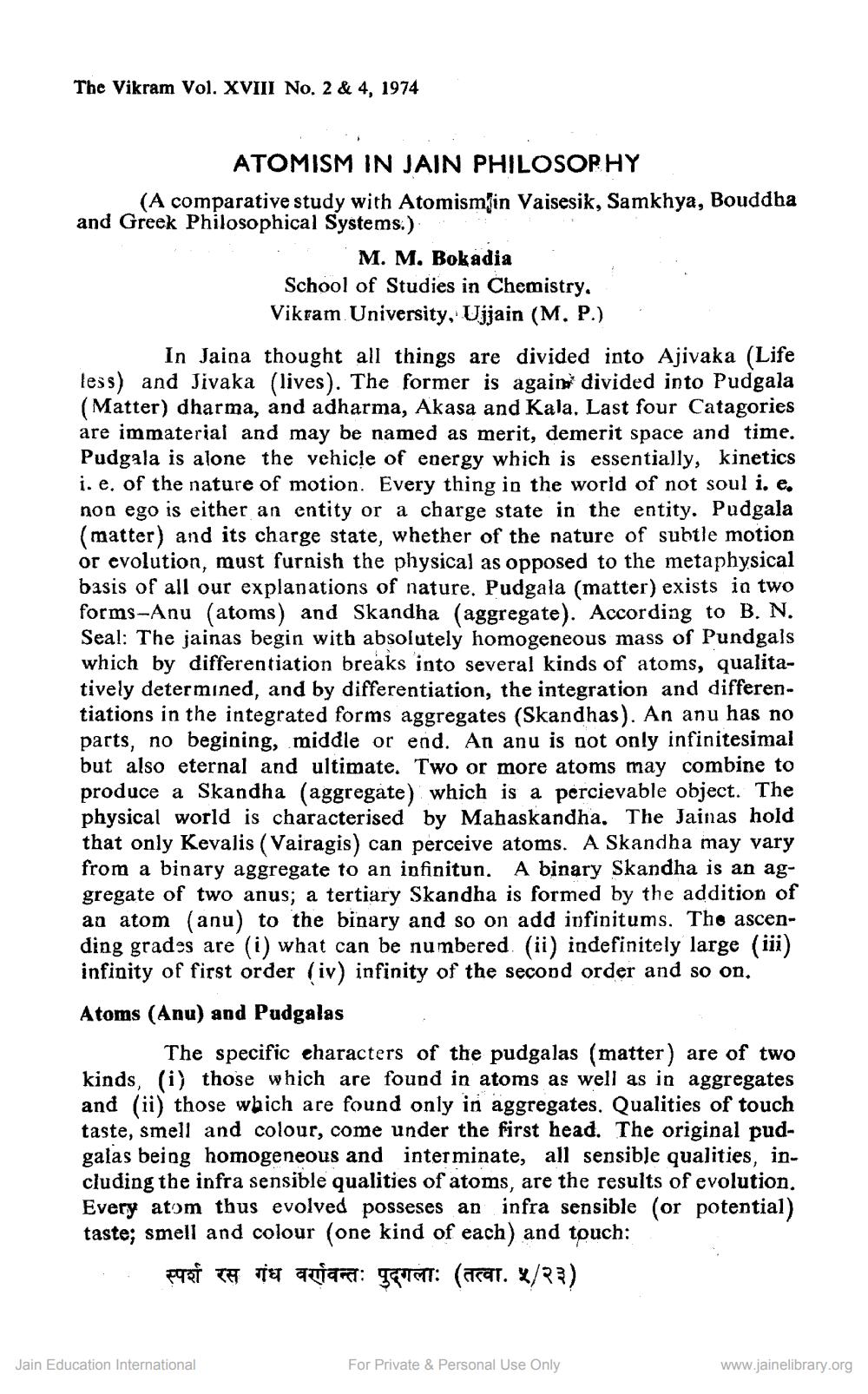________________
The Vikram Vol. XVIII No. 2 & 4, 1974
ATOMISM IN JAIN PHILOSOPHY
(A comparative study with Atomism in Vaisesik, Samkhya, Bouddha and Greek Philosophical Systems.)
M. M. Bokadia
School of Studies in Chemistry. Vikram University, Ujjain (M. P.)
In Jaina thought all things are divided into Ajivaka (Life less) and Jivaka (lives). The former is again divided into Pudgala (Matter) dharma, and adharma, Akasa and Kala. Last four Catagories are immaterial and may be named as merit, demerit space and time. Pudgala is alone the vehicle of energy which is essentially, kinetics i. e. of the nature of motion. Every thing in the world of not soul i. e. non ego is either an entity or a charge state in the entity. Pudgala (matter) and its charge state, whether of the nature of subtle motion or evolution, must furnish the physical as opposed to the metaphysical basis of all our explanations of nature. Pudgala (matter) exists in two forms-Anu (atoms) and Skandha (aggregate). According to B. N. Seal: The jainas begin with absolutely homogeneous mass of Pundgals which by differentiation breaks into several kinds of atoms, qualitatively determined, and by differentiation, the integration and differentiations in the integrated forms aggregates (Skandhas). An anu has no parts, no begining, middle or end. An anu is not only infinitesimal but also eternal and ultimate. Two or more atoms may combine to produce a Skandha (aggregate) which is a percievable object. The physical world is characterised by Mahaskandha. The Jainas hold that only Kevalis (Vairagis) can perceive atoms. A Skandha may vary from a binary aggregate to an infinitun. A binary Skandha is an aggregate of two anus; a tertiary Skandha is formed by the addition of an atom (anu) to the binary and so on add infinitums. The ascending grades are (i) what can be numbered. (ii) indefinitely large (iii) infinity of first order (iv) infinity of the second order and so on.
Atoms (Anu) and Pudgalas
The specific characters of the pudgalas (matter) are of two kinds, (i) those which are found in atoms as well as in aggregates and (ii) those which are found only in aggregates. Qualities of touch taste, smell and colour, come under the first head. The original pudgalas being homogeneous and interminate, all sensible qualities, including the infra sensible qualities of atoms, are the results of evolution. Every atom thus evolved posseses an infra sensible (or potential) taste; smell and colour (one kind of each) and touch:
स्पर्श रस गंध वर्णवन्तः पुद्गलाः (तत्वा. ५ / २३)
Jain Education International
For Private & Personal Use Only
www.jainelibrary.org




